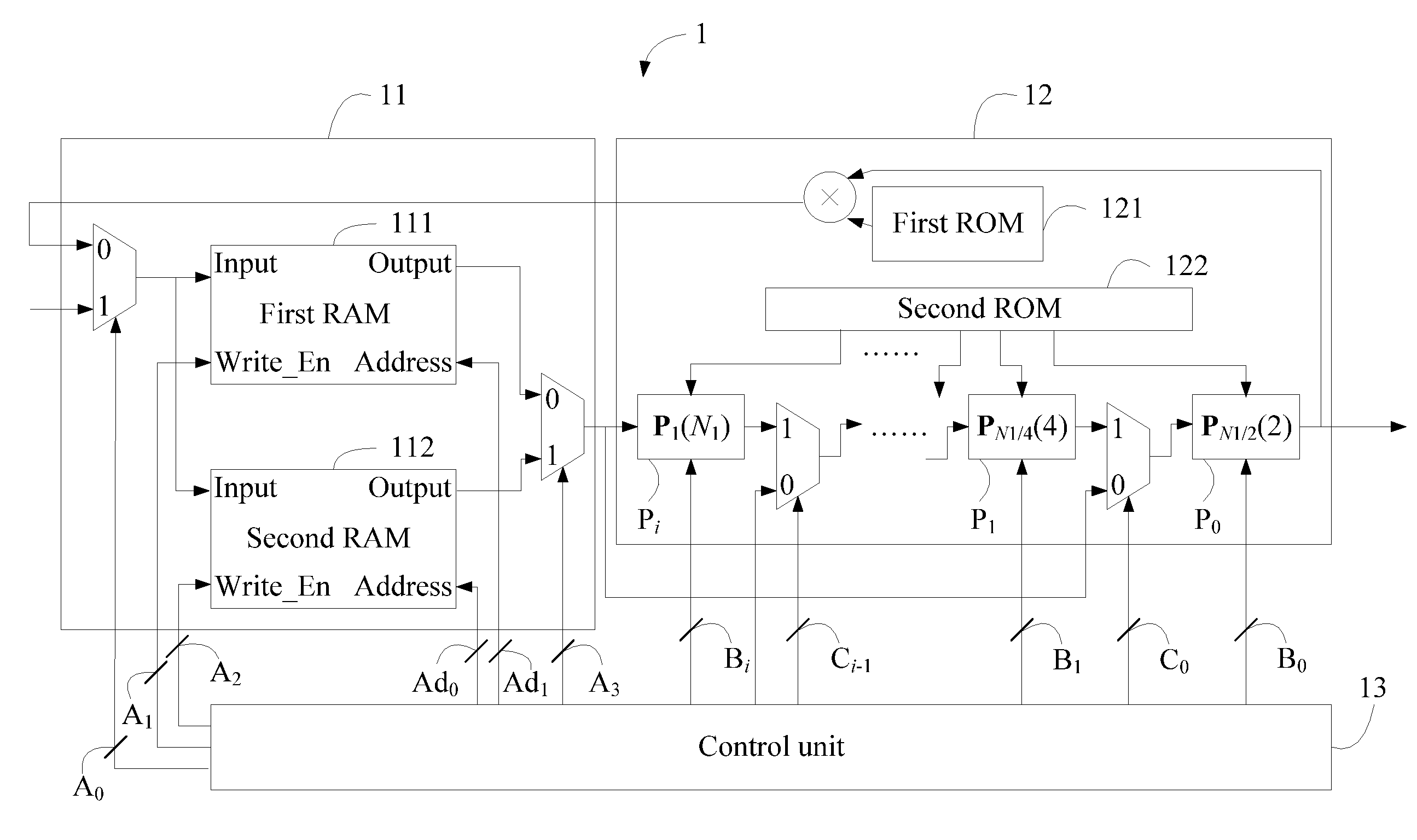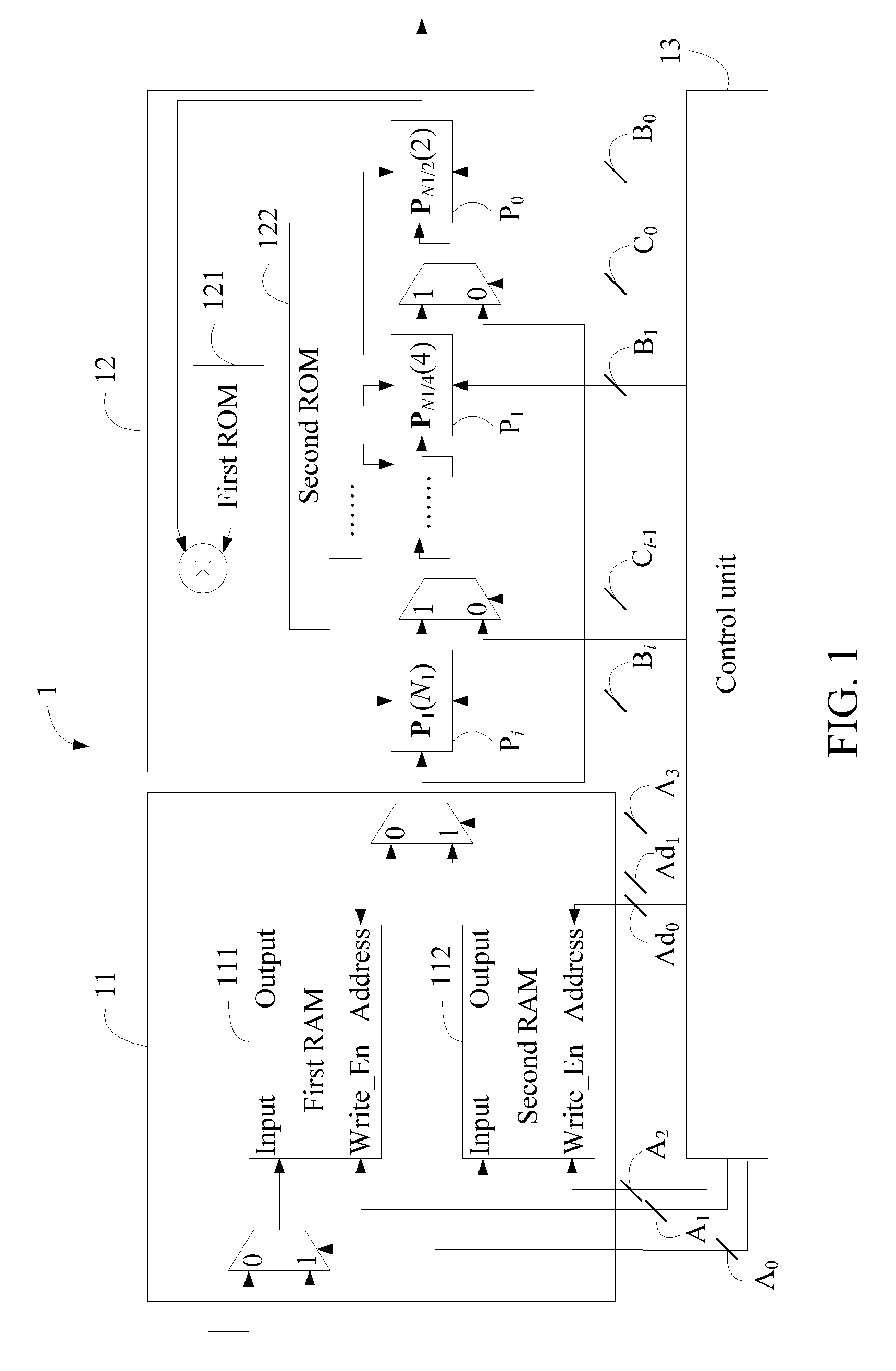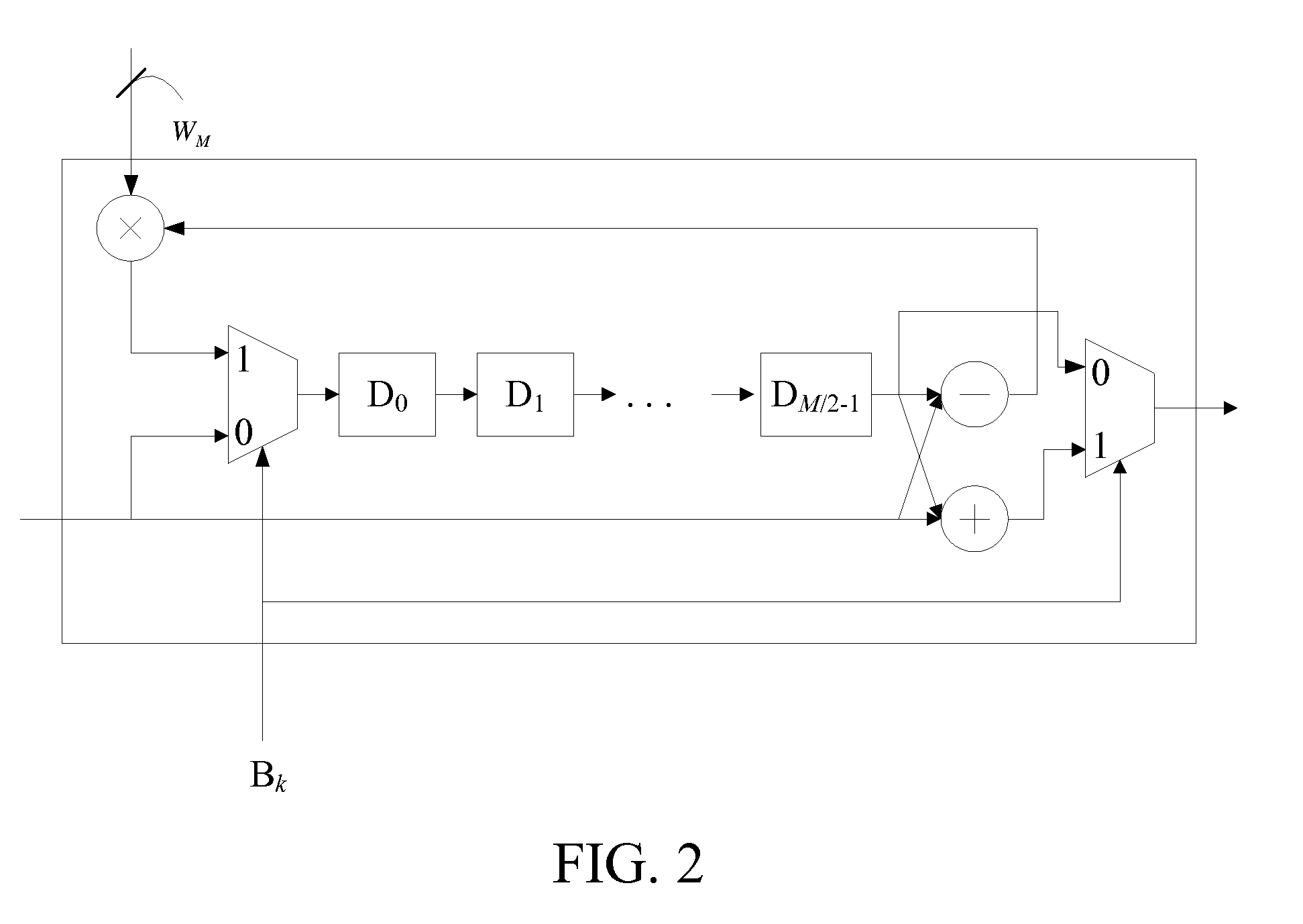Apparatus for calculating an n-point discrete fourier transform by utilizing cooley-tukey algorithm
- Summary
- Abstract
- Description
- Claims
- Application Information
AI Technical Summary
Benefits of technology
Problems solved by technology
Method used
Image
Examples
first embodiment
[0016]By using the Cooley-Tukey algorithm, the first embodiment considers the N as the multiplication of at least one N1 and an N2. That is, N=N1×N1× . . . ×N2, wherein N2 is smaller than N1. Thus, by calculating (logN1 N)×(N / N1) N1-point DFTs, N×(└ logN1 N┐) complex multiplications, and N / N2 N2-point DFTs, the N-point DFT can be completed. Furthermore, if N=N1×N1× . . . ×N1, the calculations of └ logN1 N┐×(N / N1) N1-point DFTs and N×(logN1 N−1) complex multiplications will complete the N-point DFT. People skilled in the field of the DFT should be able to understand the Cooley-Tukey algorithm, so the theory of the Cooley-Tukey algorithm is not described here. The following description is based on the assumption that N=N1×N1× . . . ×N2. That is, the N-point DFT is factored as several sets of (N / N1) N1-point DFTs and one set of (N / N2) N2-point DFTs. Nevertheless, the following description can be applied to the situation when N=N1×N1× . . . ×N1.
[0017]After factoring the N-point DFT by t...
second embodiment
[0030]The second embodiment further sets N=32 and N1=4 to explain the present invention. Table 2 shows the input sequence x0, x1, x2 . . . x31 of the 32 points.
TABLE 2N1N1201230x0x8x16x241x1x9x17x252x2x10x18x263x3x11x19x274x4x12x20x285x5x13x21x296x6x14x22x307x7x15x23x31
[0031]First, for each of the rows in Table 2, the second embodiment uses the Cooley-Tukey algorithm to complete a 4-point DFT and further multiplies a twiddle factor to the DFT result. The result is shown in Table 3.
TABLE 3N1N1201230a0a8a16a241a1a9a17a252a2a10a18a263a3a11a19a274a4a12a20a285a5a13a21a296a6a14a22a307a7a15a23a31
[0032]Next, for each column in Table 3, the second embodiment uses the Cooley-Tukey algorithm to calculate an 8-point DFT. First, the four columns of the Table 3 are represented by the four two-dimensional matrixes from Table 4(a) to Table 4(d).
TABLE 4(a)N1N1301230a0a2a4a61a1a3a5a7
TABLE 4(b)N1N1301230a8a10a12a141a9a11a13a15
TABLE 4(c)N1N1301230a16a18a20a221a17a19a21a23
TABLE 4(d)N1N1301230a24a26a28a3...
PUM
 Login to View More
Login to View More Abstract
Description
Claims
Application Information
 Login to View More
Login to View More - R&D
- Intellectual Property
- Life Sciences
- Materials
- Tech Scout
- Unparalleled Data Quality
- Higher Quality Content
- 60% Fewer Hallucinations
Browse by: Latest US Patents, China's latest patents, Technical Efficacy Thesaurus, Application Domain, Technology Topic, Popular Technical Reports.
© 2025 PatSnap. All rights reserved.Legal|Privacy policy|Modern Slavery Act Transparency Statement|Sitemap|About US| Contact US: help@patsnap.com



